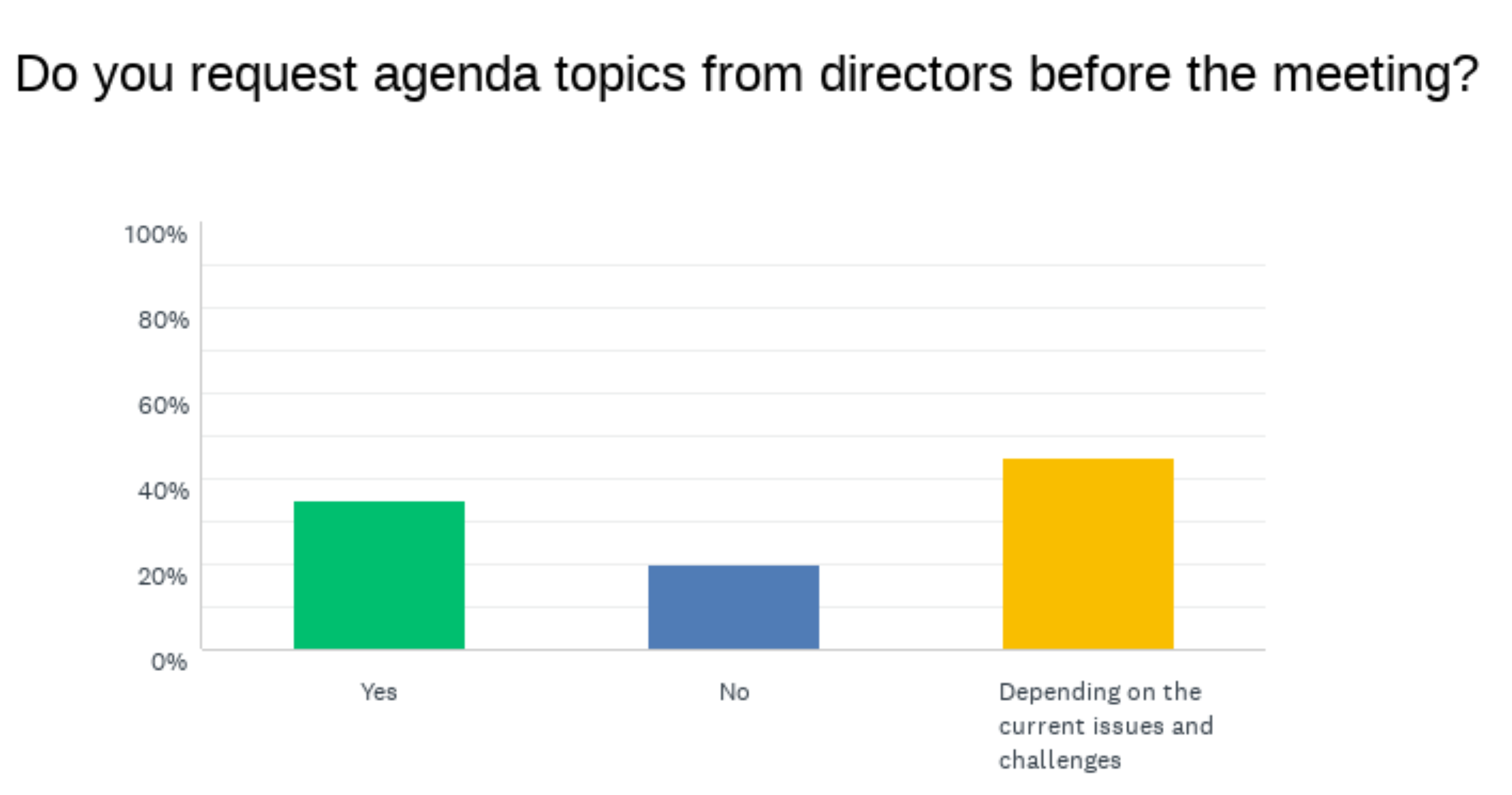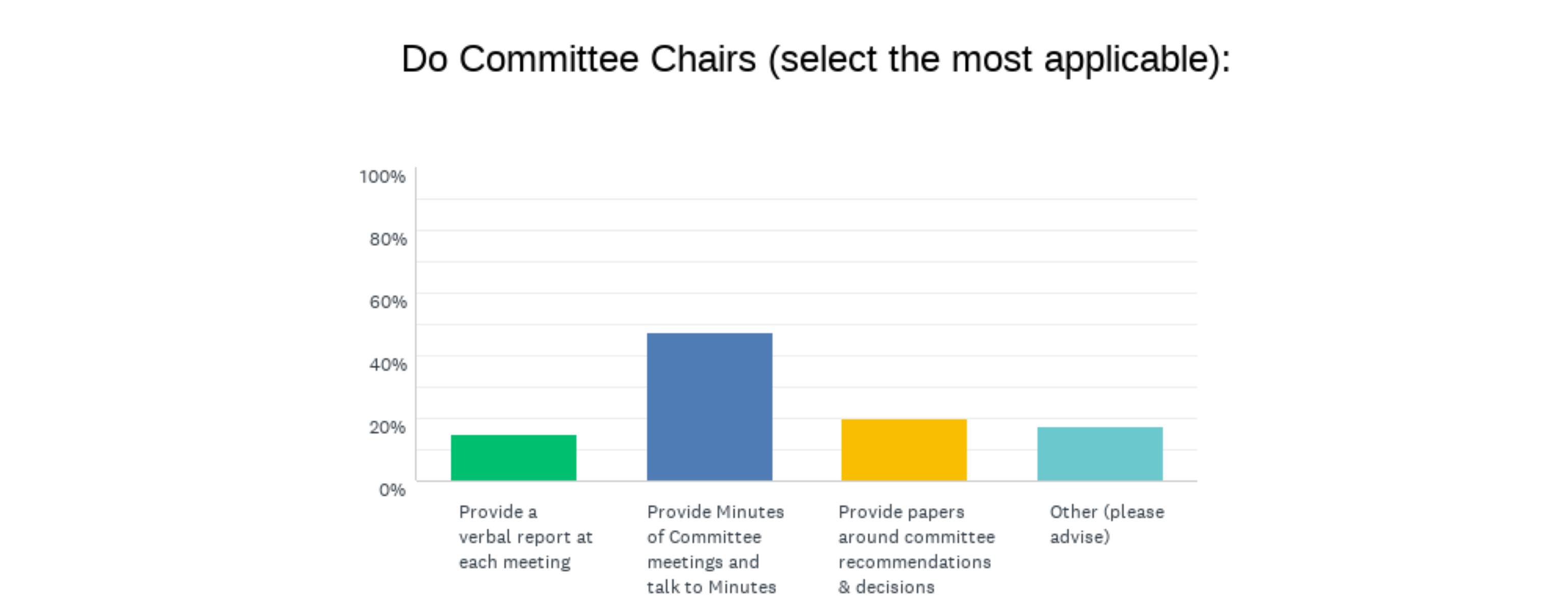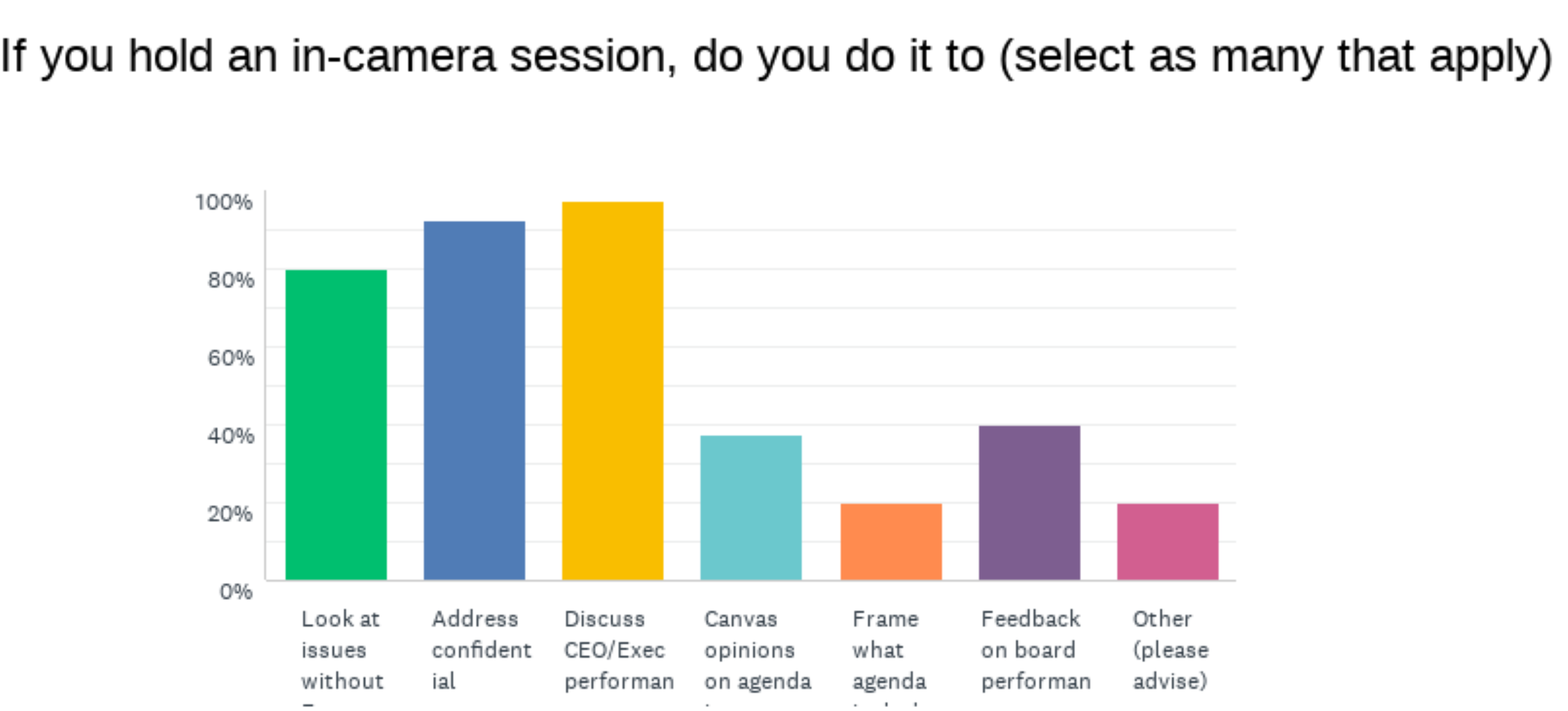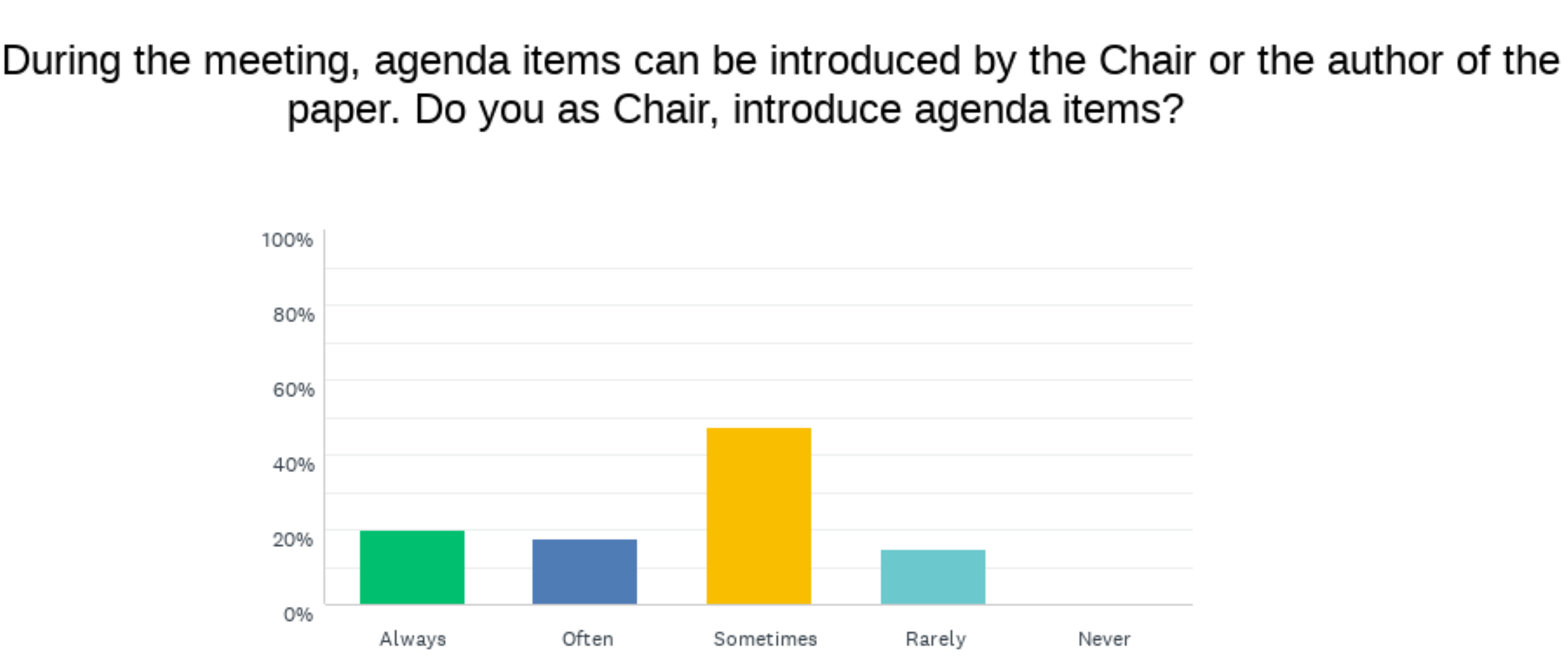There is very little understanding of how Chairs prepare for board meetings and undertake their role. There is no rule book and little guidance on good practice or common practices of being an effective Chair. At VUCA we believe this is a critical area to pursue and share our insights to support boards improve their performance. VUCA Trusted Advisors undertook a research project engaging with Chairs to gain insights into how they undertake their role. The Chairs who participated were experienced with 50% having 5 or more years of chairing and ~70% were professional (paid) Chairs.
The Underlying Principles
To interpret the results, we need to set out some underlying principles that define the role of Chair:
- The Chair is a director and is co-equal with other board members, commonly expressed, as ‘first among equals’. The Chair has no additional decision-making authority unless authorised by the board as a whole.
- As an equal and without any additional power or authority the role is to facilitate decision making and achieve consensus of the board as a whole.
In short, unlike a CEO the Chair is not there to give instructions to the other directors or inform, coax or coerce them into his or hers preferred decision. The role requires strengths in communication and leadership, strong facilitation and consensus-building skills, empathy for fellow Board Members and Executives, strategic vision, the intellectual capacity to understand complex issues and manage alternative views and debates. Also, the ability to assess priorities and focus on what is important, the ability to coach, guide and direct the CEO and the ability and knowledge to challenge views and opinions. It is a demanding role.
Preparing the Agenda
The initial step in preparing for a board meeting is formulating the board agenda and there are multiple approaches. No Chair in our research has a static agenda that remains constant meeting to meeting. Chairs are either adding emerging issues to their agenda or utilising a board work plan and including emerging issues. 75% of respondents utilise an annual board workplan to guide their board agendas. It is good practice to plan the board’s meeting over the full year to address the strategic, risk, compliance, and operational oversight requirements of the board. In our experience not having a board workplan is a common feature of underperforming boards and entities with governance problems. To formulate the board agenda Chairs also request and receive agenda items from Directors.
Depending on the current issues and challenges, 45% of Chairs request agenda topics before the meeting.

35% of Chairs are requesting agenda items from their Director colleagues and another 45% are openly flexible about seeking agenda items. 95% of Directors sometimes or rarely request agenda items. There is no defined good practice, in line with the principles above, a Chair should be open minded and flexible but should not need to request agenda items from directors for every meeting. Conversely, continual requests from director/s for agenda items suggests that the board and CEO are not on top of the issues or there are some other underlying governance challenges e.g. a difficult Director.

Governance is a team sport and the Chair setting the agenda in conjunction with the CEO and/or Company Secretary is best practice. Allowing a CEO to set the agenda with minimal or no input from the Chair allows the CEO to control the board agenda, discussion and decision making for his or her needs subverting the ability of the board to govern i.e. ‘the tail wagging the dog’.

“A combination of the above – varies to some degree at different boards. All three above are good practice.”
There is a wide variety of practice when it comes to handling board committees which may reflect differing entity scale, context, and governance evolution. A Committee Chair reporting without any Minutes is not ideal and a board pack overloaded with Committee minutes can be tedious to wade through. We think the higher order practice is to have the Committee Chairs speaking to specific papers generated by the Committee and the Committee Minutes. If each Committee has its own work plan aligned to the board work plan, Committees should be producing papers with recommendations for the Board to consider. A Committee that is not producing papers may not be effective and need review.

The role of Chairs reading and approving board papers was surprisingly controversial with 27% always undertaking this and delving into why 33% believe ‘it is good practice for the Chair to do this (see below). We don’t share this view. A Chair may need to consider if the underlying issue to always approving board papers is the Executive team requiring education or coaching on board reporting and paper writing, under-performing Executives or micro-managing on the Chair’s part. With 40% of Chairs reading and approving the board papers ‘sometimes’ understanding the reasons behind this practice is informative.

The three top reasons ‘Complexity or importance of the item’ (64%); ‘CEO seeking advice and input on a paper’ (55%) and ‘To ensure strategic, risk or ethical issues are covered’ (39%) are good practice and allow the Chair to coach and support the CEO, bring their experience and intellectual capacity to lift the quality of a paper and in turn the quality of the board analysis, discussion and decision making.
Preparing for the Meeting
Unlike a Director a Chair cannot simply turn up after reading the board papers 2 to 3 times. Good practice warrants consideration of how to facilitate individual items to support discussion and decision making.
“A lot of thinking ahead of the meeting about how best to raise, facilitate and, ideally, reach a consensus on the item. Often it involves discussion with the directors and CEO prior to the meeting to canvas their views and ideas on how best to handle the matter”
“I try and layout the facts in chronological order. Put a list of pros and cons together which I table with the board. I find this helps look at issues from both sides, and assists bringing directors together to debate an item. On occasions, I will ring key influencers before the meeting to seek their views so that I am fully prepared for the debate”

Coaching or checking in with new or inexperienced Directors is best practice chairing.
Gathering opinions or assessing the degree of passion or disparate views on an agenda item (58%) can assist a Chair to prepare for a discussion. Care needs to be taken that this doesn’t stray into trying to influence the outcome. Expressing your opinions or views on an agenda (10%) prior to a board meeting may suggest the Chair is trying to control the outcome or exert too much influence over the board decision making. As ‘the first among equals’ the Chair’s opinion is but one around the board table.
When boards are going well with few challenges and well behaved ‘professional’ Directors not or rarely contacting Directors before the meeting (33%) is understandable as the board table is where the work is done.

With ~90% of Chairs considering a range of options to facilitating board discussions the feedback showed a range of practices ‘a committee chair might lead discussion, an Executive might present a paper, an external facilitator might be invited to lead a strategy discussion, external expert might present a paper for our response, ask different Directors to lead a discussion, use of visual and digital aids, physical site inspections and setting up a workshop for strategy or more complex issues’. For those Chairs who rarely use different approaches to facilitating (12%) you might want to put more effort into your preparation, so your meetings are not dull, tedious and repetitious … a Directors version of ‘groundhog day’.

It is good practice to hold in-camera sessions and 98% of Chairs do this (only 2% rarely). The bar chart shows a range of reasons but feedback demonstrated even greater diversity – build board culture, check on the health and wellbeing of the board, check in on the Directors on a more human level, provide an opportunity for the Board to explore any issues that they feel are being missed and also to review together Board-Executive communication and performance, to address conflicts of interest. It is, however, very important that feedback on the in-camera session is given to the CEO or Executive as soon as practical to maintain a culture of transparency and trust.

“I am careful to avoid giving a “Chairman’s” view until all opinions have been canvassed. Having said that, I insist all board papers have a clear recommendation and outline any financial impact.”
“Sometimes I introduce if it has been a long/complex process, or to set context. I try to generally (but not always) refrain from giving my view till towards the end of the discussion.”
If the Chair’s role is to facilitate the collective decision making of the board care needs to be taken with introducing agenda items as you are no longer a neutral facilitator. It is not good practice for the Chair to always introduce agenda items. The 20% of Chairs who are always introducing agenda items may well be unconsciously or deliberately framing the board’s discussion to their view or allowing their ego dominate the board table.
The free text feedback on the ‘poor chair behaviours that impact on meetings and directors’ reinforces our view that it is poor practice:
- “Failure to engage with other Directors. Not allowing them to have discussion and opinions.”
- “Dominating the discussion”
- “Not allowing for and/or shutting down the “alternative case”
- “Pre-empting the outcome and not open to other approaches”
- “Stating an opinion too early”
- “Controlling, driving an agenda to suit their own needs”
- “Talking far too much as Chair rather than orchestrating”
Conclusion
High performing Chairs have a significant impact on board performance and in turn organisational performance. Experienced Chairs say being a Chair is far more demanding than being a Director and it clearly is. Being grounded in the underlying principle of ‘first among equals’ and focussing on facilitating and supporting the collective input and decision making of the Board is essential to being a high performing Chair. It can be difficult to let go of your own ego, especially if you have been a CEO or senior executive, but high performing Chairs are focussed on bringing out the best in their fellow directors and not controlling the outcome or demonstrating how clever they are.
Preparation begins with developing the meeting agenda based on the Board workplan and in conjunction with the CEO and Company Secretary. At this point giving consideration to different approaches to facilitating agenda items and conduct of the meeting is valuable for maintaining vibrancy of your meetings and achieving good outcomes.
“Identify key issues to ensure they’re covered; prepare a checklist for myself to refer to during the meeting; get clear on the decision that’s required to be made (not which way it goes, but the essence of it). At times will speak to Directors beforehand to encourage their input and assure them their voice (so can listen); discuss with the CEO”
“Very thorough preparation. Canvassing active contributions from all. Keeping to time. Inject humour. Insist on fellow Directors being well prepared. Insist on and give guidance for good quality papers and presentations from operational people”
For more information on VUCA Chair Support Services please contact Paul Geyer on paul.geyer@vuca.com.au
Paul Geyer FAICD
Director, VUCA Trusted Advisors

